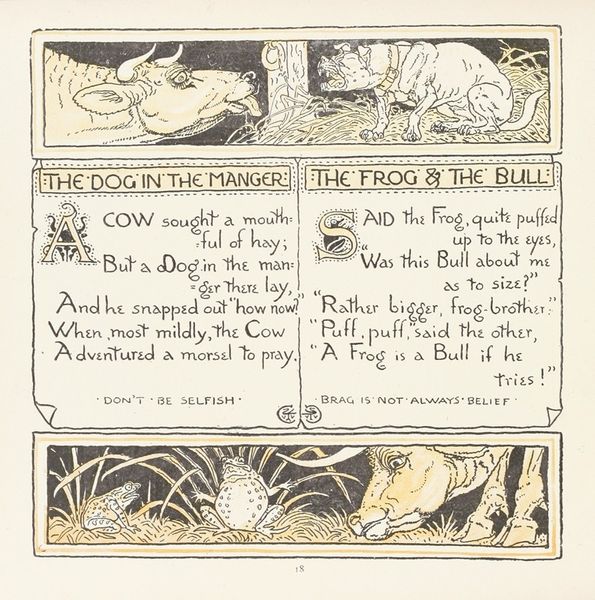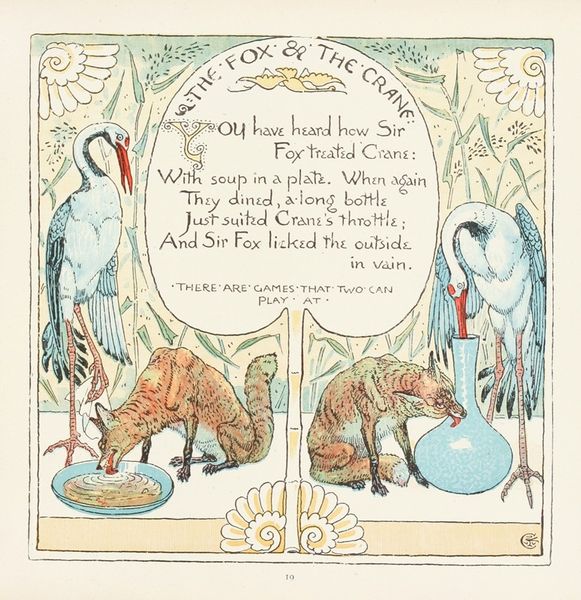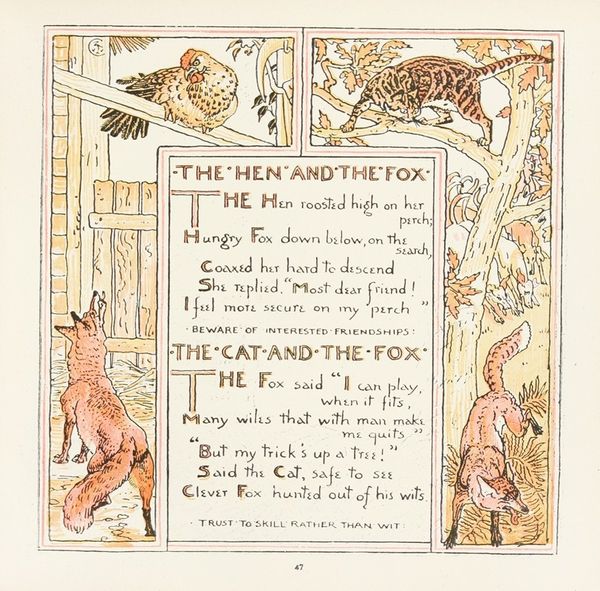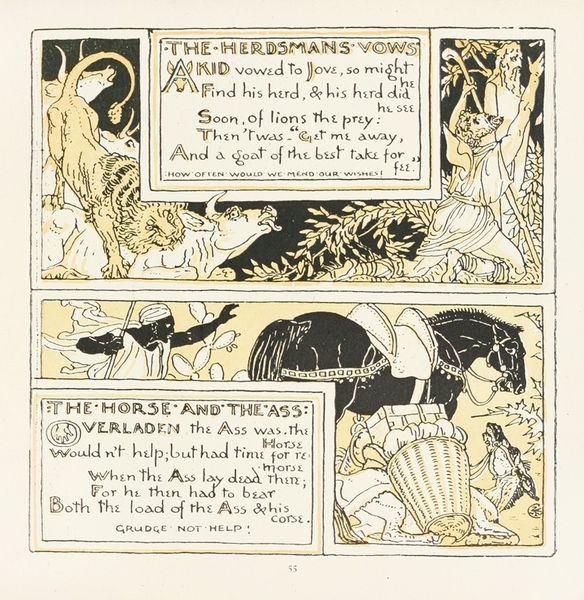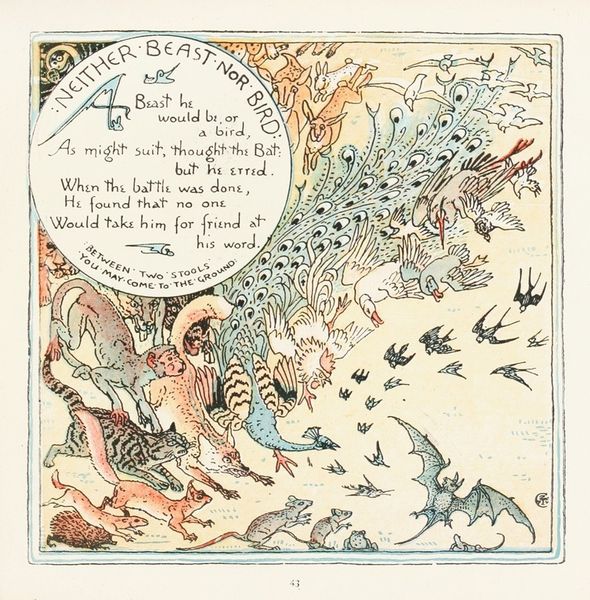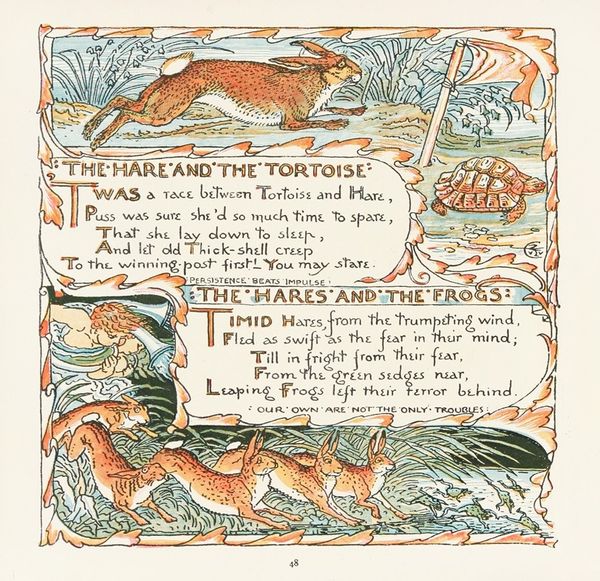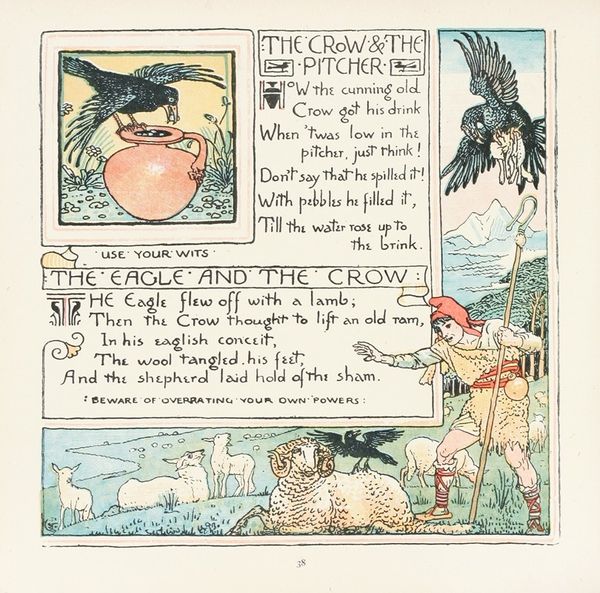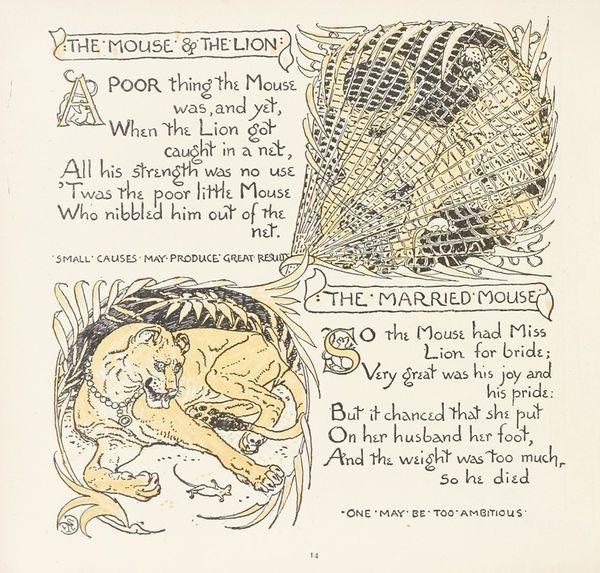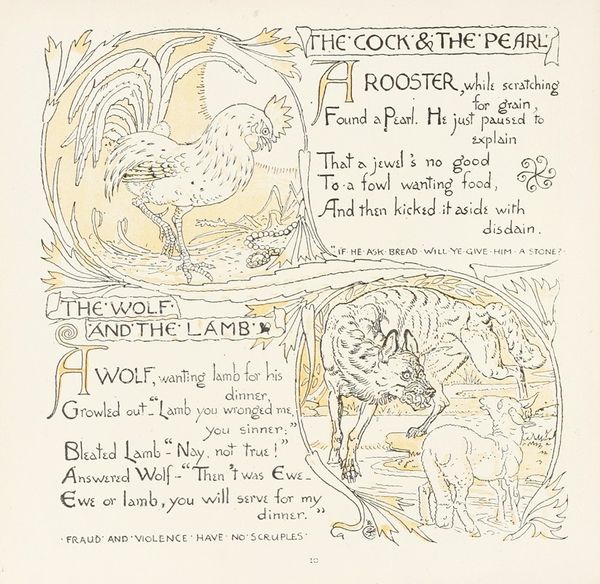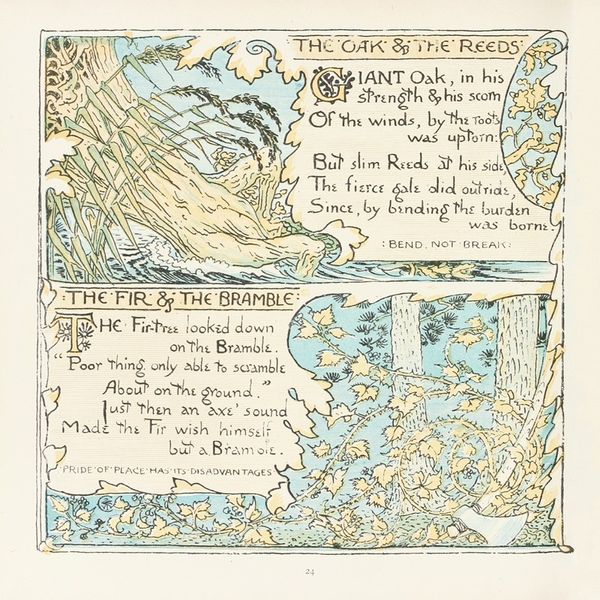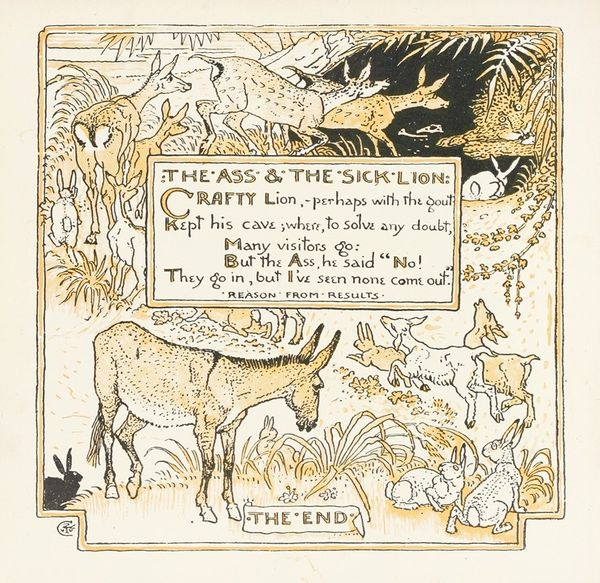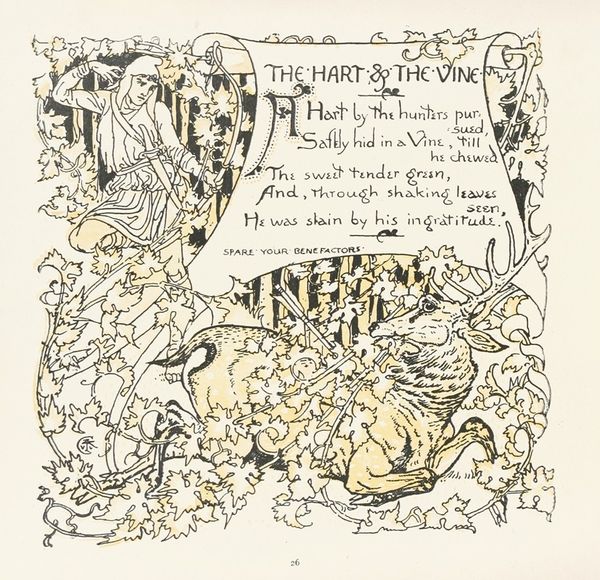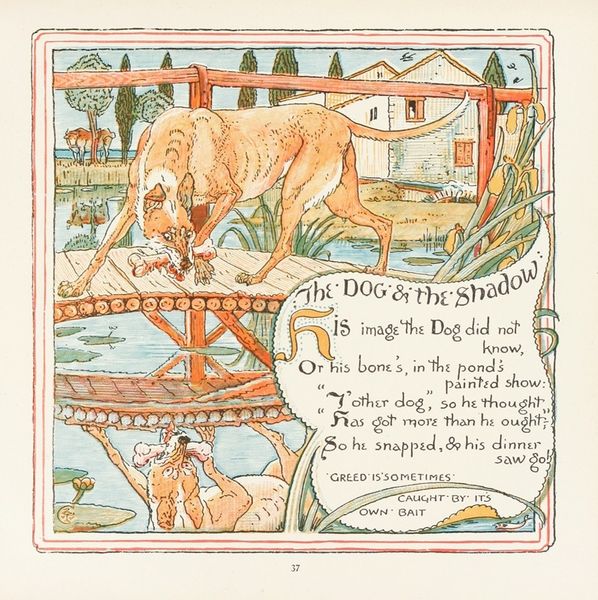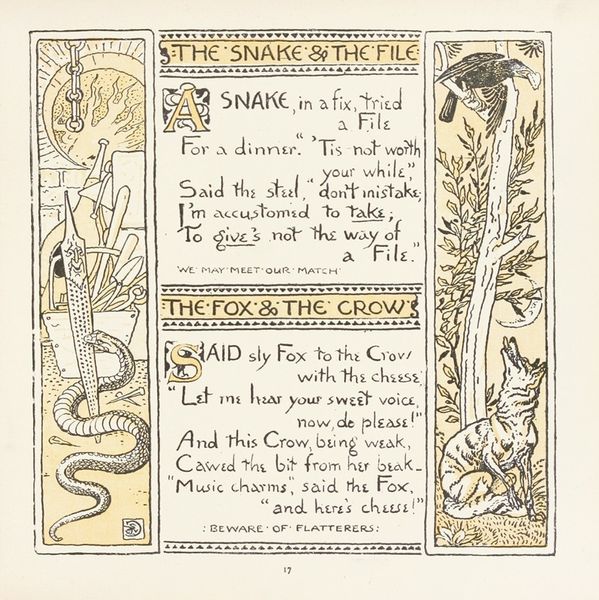
drawing, print, paper, ink
#
drawing
#
narrative-art
# print
#
landscape
#
figuration
#
paper
#
ink
#
academic-art
#
modernism
Copyright: Public Domain: Artvee
Curator: Walter Crane's "Horse and Man, The Ass and the Enemy," created in 1908, really captures the style of illustrations typical in printed books of the time, utilizing ink and paper for his drawing. Editor: My first thought is that the color palette creates a sense of antiquated charm. The pale blues, yellows, and greens are used as borders of separate registers, almost like cartoon panels within a longer comic. Curator: Crane was heavily influenced by the Arts and Crafts movement, valuing handcrafted production and incorporating narratives, and of course as the text displays, with an easily gleaned moral message. Editor: Exactly, and within those panels we get a very simplified yet effective rendering of forms. Look at the economical lines that define the horse's musculature in the top register versus how rudimentary it looks, collapsed, in the bottom! It certainly suggests the relationship of subjugation discussed in the texts of both panels, between the title "Horse and Man," and the quote between "Man would make him his slave & his hack." Curator: Right, and it subtly critiques hierarchical social structures by presenting both scenarios—the horse willingly aiding man and the donkey refusing to participate. It points towards resistance and questioning of authority, prevalent themes during Crane’s era, especially the political shifts towards social mobility. Editor: Absolutely. This narrative is presented within the form; note how Crane separates distinct visual elements. The lettering, composition, the landscape that repeats within each of the panels are all simple, yet they convey more than enough about both animals states. It uses a visual style reflective of late 19th-century storybook design. Curator: Crane was invested in using these accessible narratives as allegories, offering viewers simple truths wrapped in familiar visual language. He’s not merely decorating a page, but participating in the dissemination of social ideas. Editor: Indeed. And what strikes me now is how those lines also evoke the tension between cooperation and defiance, playing on simplicity. Thanks for highlighting the piece’s connection to social issues. Curator: Thanks to you for unveiling its elegance of design!
Comments
No comments
Be the first to comment and join the conversation on the ultimate creative platform.
